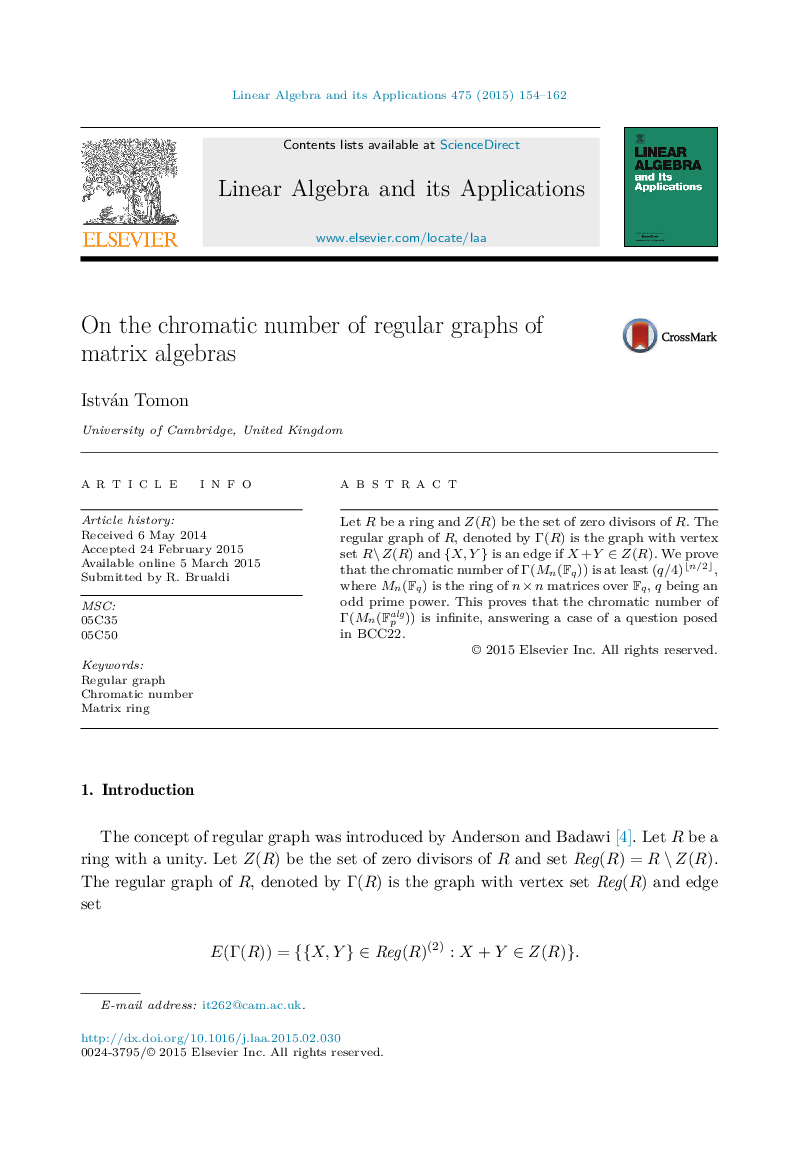| Article ID | Journal | Published Year | Pages | File Type |
|---|---|---|---|---|
| 4599091 | Linear Algebra and its Applications | 2015 | 9 Pages |
Abstract
Let R be a ring and Z(R)Z(R) be the set of zero divisors of R. The regular graph of R , denoted by Γ(R)Γ(R) is the graph with vertex set R∖Z(R)R∖Z(R) and {X,Y}{X,Y} is an edge if X+Y∈Z(R)X+Y∈Z(R). We prove that the chromatic number of Γ(Mn(Fq))Γ(Mn(Fq)) is at least (q/4)⌊n/2⌋(q/4)⌊n/2⌋, where Mn(Fq)Mn(Fq) is the ring of n×nn×n matrices over FqFq, q being an odd prime power. This proves that the chromatic number of Γ(Mn(Fpalg)) is infinite, answering a case of a question posed in BCC22.
Keywords
Related Topics
Physical Sciences and Engineering
Mathematics
Algebra and Number Theory
Authors
István Tomon,
